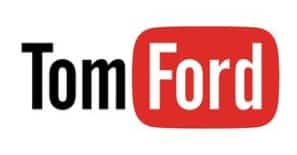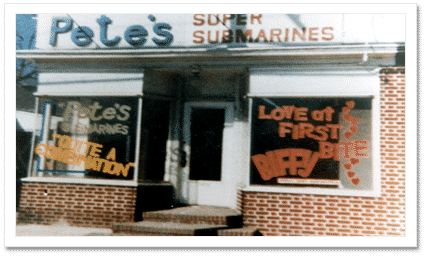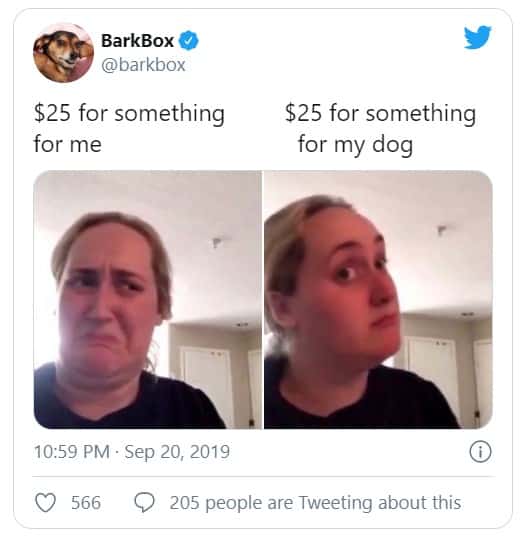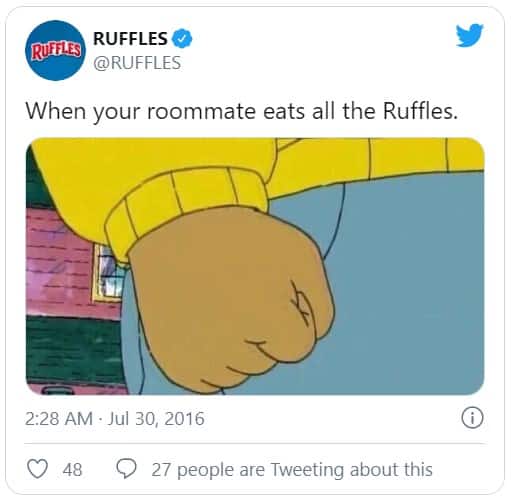
Are you considering to rebrand your business?
Perhaps your logo does not inspire you anymore. Or, maybe your brand no longer appears aesthetic to your customers.
Your need to rebrand is not particularly a bad sign. Most of the top Fortune 500 companies have rebranded their business several times over the years. Microsoft has been visually rebranded several times over the past few decades.
Microsoft’s rebranding
More often than not, a rebrand shows that a company has evolved beyond its original vision and is now reaching greater heights. That said, the process can make or break the brands existing identity. Hence, plenty of thought needs to go behind the “why” of the rebrand.
Businesses often ignore the importance of branding. The quick fix of non-custom designs and generic templates leaves brands visual identity similar to their competitors. If this is the case, rebranding would be the way to go as it can help establish a unique brand identity that your target audience can connect with.
For instance, did you know that Google was named Backrub? It’s not uncommon for a brand to quickly outgrow its minimal presence and pivot with a strategy to expand and gain market share.
Visual information is the first touchpoint with a consumer for a brand. It is all about establishing trust. Most brands fail to be consistent with their visual elements representing the brand such as logo, font, and colors.
As a business, it’s essential that you have your brand message represented through subtle visual elements for users to recognize instantly. If not, it’s about time you consider rebranding.
Your business has been around for quite some time which also means old school color palette and fonts. To compete in the modern business world, brands need to adapt to changing trends and target audiences to avoid losing market share.
Every day that you continue to operate with an outdated identity, you’re decelerating growth especially true when you’re competing with a plethora of innovative and creative brands.
It’s a well-known fact that users can easily skim through an image rather than a text. Hence, visuals have the advantage to communicate information easier than plain text. Recently, BuzzSumo had concluded that Facebook posts with images had 2.3 times more engagement than those without any. That’s quite an enormous jump in user engagement.
Increased engagement with visual content
Thus, replacing long blocks of text with a combination of images, GIFs, and infographics can make your marketing campaigns more interesting. Apart from posts, visual content can also help you engage website visitors longer and ultimately increase your click-through rates.
It’s surprising to know that about 65% of people are visual learners. So, it’s easier for users to identify your brand with an image that plain text. It’s as simple as being able to identify established brands at a glance. For instance, have a look at the example below.
Quick! Do you see a triangle?

Both sides contain a triangle. But, your brain identified the image of a triangle on the right faster than the plain text on the left, didn’t it?
This is exactly why using visuals to help users identify your brand can improve your brand recognition. To start with, revisit your brand’s landing pages, ad campaigns, social media updates to ensure consistency in visual elements. With multiple variants of campaign visual elements, it’s easier to track the creatives responsible for maximum engagement.
Videos, images, and other visuals are imprinted in memory for a long time. This is because the user sees the same visual elements as they visit the website, social media page, blog, etc. For example, consider this logo.
Do you find this logo to be similar to YouTube? Why is that?

It’s due to the sole reason that YouTube has managed to maintain a consistent brand image that the logo is imprinted in your brain.
So, the more consistent your brand image, the more likely are people to recognize your brand and further your product. This easy recollection leads to increased customer engagement with your brand.
Prior to getting started have these questions answered—
Burberry serves as a great example of a balanced rebranding strategy.
Over time, Burberry is associated more with the older generation. As a response to this situation, Burberry decided to rebrand. They started by hiring an anthropologist to research what would appeal to younger audiences. It completely revived Burberry as a luxury brand.
Most brands get their logo redesigned from time to time to embrace a modern look. For instance, Instagram, Uber, MasterCard, etc. have changed their logos to stay fresh, young, and vibrant amongst their target audience. Here are some examples of famous logo redesigns.

Famous logo redesigns
Great brand imagery not only contributes to consumer recognition but also boosts the overall brand personality. When it comes to imagery, color plays a massive role. Research shows that color can increase brand recognition by 80%. Air Asia is a wonderful example to exemplify the value of great brand imagery.
There’s no doubt that the airline’s simple, red and white logo makes a bold statement. Its consistent brand imagery makes it easily recognizable all across Southeast Asia.
Often neglected, fonts play a major role in how your brand is perceived by your customers.
Souq, the e-commerce giant in the Middle East changed its font type to a more modern look. The change in the logo makes it more appealing to the younger users of Souq. Also, the transition of the logo was so smooth that most people failed to notice the change from its predecessor.
This one’s quite controversial. Changing your brand name might appear to be a huge move. It could cost you your organic growth traffic and your brand recognition. However, if your brand name still fits, it’s wise to retain it. But, if your current name doesn’t align with your evolved identity, it’s best you rename your brand.
Pete’s Super Submarines is one such example of renaming done right. In 1965, Pete’s Super Submarines was a famous sandwich shop in Connecticut.

The founder of this company, after low customer traction, changed the name to Doctor’s Associate Inc., after co-founder Dr.Peter Buck. Despite this, low consumer traction continued to persist. It was only then they thought of what would be a household name worldwide —Subway. The business finally took off as customers were able to relate better to this brand name. They hit jackpot with this name and expanded to be a multi-billion dollar business.

Colors are a crucial part of your brand are known to affect the emotions of people. Here is an infographic that demonstrates how brands use different colors to have an impact on their user’s moods and mindsets.

These brands have successfully driven emotions into people’s minds using a suitable color palette. Similarly, to make the most out of colors, identify what emotion you want your brand to deliver. Some brands may want to create a joyful sentiment whereas another might want to appear sassy.
Pick a combination of a few colors that express your brand the best. Use any color generator tool to pick the right mix for your brand.
While there are plenty of modes of visuals that you can use, it makes sense to use content types that align with the context of the content. Here are the 5 types of visual content that can push your campaigns to the next level.
Did you know that articles with images get 94% more views than those without?
Increased number of views with visual content
When you split up a body of text with some relevant images and videos, people engage with the post for longer. While using images, ensure to use original ones that reflect the brand personality to appear more relevant to the user.
Videos are extremely powerful to deliver a story in a short span of time. It can be useful to present common problems and then show the solutions that your product or service can offer. A great video can offer additional clout for your marketing campaign by delivering the right message to your audience. Research shows that landing page conversions increased by 86% after including a video in it.
Here is a video by Reebok with a woman running in reverse, all the way back to the day she was born.
The goal was to communicate their brand vision of changing how fitness is perceived by people. At the end of the video, there’s a clickable CTA that reads “Calculate your days’. Through both the video and the CTA, Reebok had successfully ensured that their message is both compelling and actionable.
Similarly, you could generate several types of videos – how-to videos, explainer videos, review videos, testimonials, etc. Rocketium’s online video maker is a great tool that can help you create videos and dominate the market with your video marketing strategy.
Meme marketing is one of the most powerful marketing strategies out there today. It has transformed thousands of brands’ social media presence.
One of the best examples is a meme by BarkBox. BarkBox provides a monthly subscription box full of treats and toys for dogs. By using a range of dog-memes on their Twitter page, they have managed to grow their account to over 300k followers. Unlike other businesses, Barbox ensured to understand their users and produced humorous content to improve their brand presence. Here’s one of the memes by BarkBox.

However, Ruffles, one of America’s widely known potato chip companies, failed miserably. In an attempt to join in on the viral meme trend, Ruffles created this meme and posted the same on their Twitter page.

Finally, creating your own meme can even help your brand set a trend. Although, make sure that your memes are appropriate for your target users.
Apart from instructional videos and testimonials, live videos are one of the most engaging forms of visual content. Your brand can cover live events, conduct live interviews, or carry out live how-to sessions. These videos will help your customers feel inclusive. The Gucci live stream with Jared Letto amassed the 10.7k views within 10 minutes.
Rebranding is a commitment made by a brand to revisit its core value. Like any other strategy, the important first step is to identify the purpose behind why you want to rebrand your business followed by a focus on how to create a differentiator for the brand from the competition, visual elements, or modifying the overall product. Finally, scale to improve customer reach.